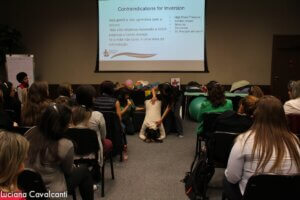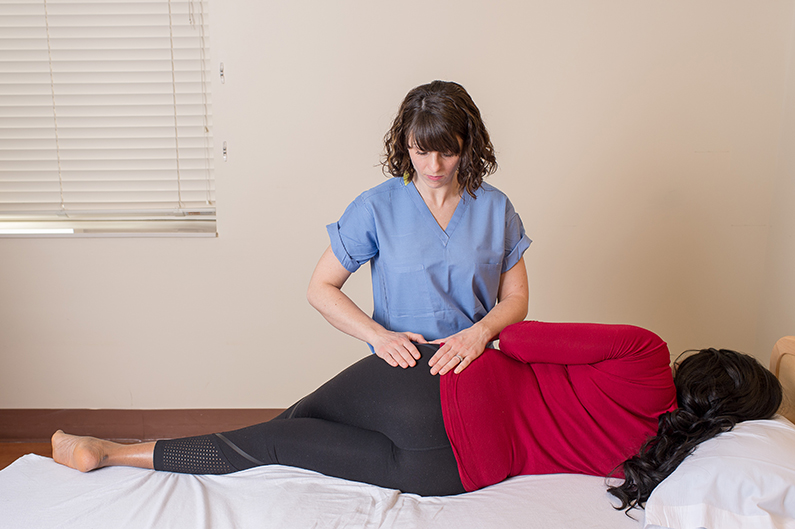
You can always “use” the concepts taught on this website. Spinning Babies® as an approach for comfort in pregnancy and ease in birth can be a way of seeing what is going on. We can take our approach for noticing fetal position as a clue to choose body balance and labor easing activities.
When someone says they did Spinning Babies®, I would expect that they understood the concepts, paradigm and anatomical appropriateness to match techniques and birth positions. Otherwise, they did a technique or techniques without the context of when and why, and in the big picture, how.
But there are some activities that are not safe in some situations, or they might not be safe. These are contraindications.
Let’s take a look at a few techniques we recommend or have recommended at Spinning Babies®
We want everyone to know when to be careful or when to avoid doing a technique altogether.
You may know that Spinning Babies® arranges three particular techniques in an order we call the Three BalancesSM. We love these three techniques as a base for body balancing and comfort. There are so many benefits to these three techniques!
Overall these techniques are so effective for so many that you might suspect rainbows and flowers. But there are a few situations these should not be done. Let’s look at the dark side for a moment. We will learn something important.
With any pregnant person experiencing bleeding in pregnancy, we do not recommend doing any of the variations of the Three BalancesSM.
This includes earlier bleeding that has stopped. This is a webpage, don’t assume you’ll get individualized attention. Our workshops are general. Assessment is best done in person to avoid unfortunate, though rare, adverse events. Write to us, we record adverse events.
Use the very light touch in an abdominal release or standing release instead. Are they the same? No, but they have their own unique benefits which can add comfort and balance and promote optimal room in the womb for baby’s position along with our daily activities.
Please be careful doing The Jiggle near the baby and the abdomen. Rather, focus on the broad glutes and thighs or a tiny portion of the back.
We support the Parteras and Healers of Mexico and Central America who learned the Rebozo manteada from their elders and have life long experience. Please learn context from them and not just a technique outside of the whole.

The Forward-leaning Inversion is an amazingly effective technique for balancing the cervical ligaments. We’ve increased the clarity of how to do the steps in and out of the inversion. The website lists benefits and contraindications as well.
You may jiggle the buttocks while the birthing (not pregnant) person is having contractions to help labor progress. We call this “Shake the Apples”. Don’t knock them over! The contractions help baby stay head down. Don’t use this except when other techniques fail.

Don’t do the Side-lying Release when there is
People who are hyper mobile can bend their thumb to their forearm or reverse their knees and elbows slightly. Alternatives to body balancing can be addressed by professional body workers.Wearing a pregnancy belt will support the belly in this case or any situation which would increase comfort by doing so. A small pillow under the belly isn’t appropriate because when positioned correctly for Side-lying Release there won’t be room for the pillow.
Expanding our first Balance to the level of The Jiggle acknowledges the fascia receptor for vibration. As gentle as we teach the jiggle we don’t expect any contraindications.
That’s all, common sense.
Be mindful of squatting in the first trimester. See our suggestions or go check out Katy Bowman in Nutritious Movement.com
This is a great technique but takes finesse. Don’t jerk someone around if you are the helper. Slow works (with repetition) better than doing it fast.
In general, safety measures and respectful pacing reduce unwanted effects.
Being aware of medical contraindications means being aware of medical conditions.
A doula who may be suggesting techniques might learn much about the pregnant client by taking a moment after describing the technique, its purpose, and benefits as well as contraindications. A pause at this time can come with these or similar words, “Take a moment to consider whether this technique is right for you” or “Check in with your body to see if this technique feels right for you.”
When there is a medical, preference, or practical reason not to do a technique, find an alternative. The alternative may not be as effective, for instance, nothing untwists torsion around the cervix like the Forward-leaning Inversion. Several other techniques might be necessary to achieve comparable benefits to a Side-lying Release. You’ll find your way to add balance with techniques that are available. Look at the page explaining the technique for alternatives.
I hope by knowing the contraindications you will feel confident with the techniques recommended at Spinning Babies®. And with them, you experience the brightness of physiological birthing in more gentle experiences of spontaneous births.
[tribe_events_list limit=”4″]